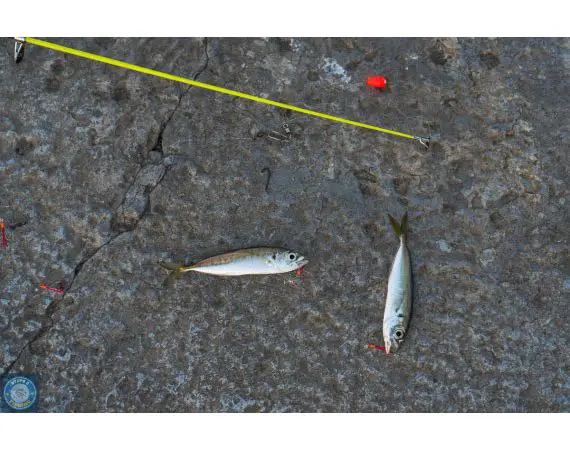
At the start of the debate of Brown Trout vs. Brook Trout, it’s clear that each species has unique characteristics and behaviors. Brown Trout are the adaptable, opportunistic predators, while Brook Trout are the vibrant, cold-water inhabitants. Understanding these differences can enhance your fishing experience and help conserve these remarkable species for future generations.
Trout is as old as the streams themselves. Anglers and outdoor enthusiasts often ponder the distinctions between these two beloved fish species. This article will explore Brown and Brook Trout’s characteristics, habitats, behaviors, and more. Whether you are an expert or new to fishing, keep reading to discover the differences between these two types of trout.

Understanding Brown Trout vs. Brook Trout
Before we delve into the specifics, let’s establish a foundation by briefly introducing Brown Trout and Brook Trout.
Brown Trout (Salmo trutta)
The Brown Trout (Salmo trutta) is a formidable adversary in the angling world. This remarkable species, native to Europe, has been introduced to various parts of North America and has since established itself as a prized catch among anglers. Let’s explore what makes the Brown Trout a remarkable quarry.
- Physical Appearance: Brown Trout are typically brownish-olive in color with dark spots on their sides. They have a streamlined body and a slightly forked tail.
- Size: They can vary, with adults usually ranging from 12 to 30 inches, though larger specimens can be found.
Brook Trout (Salvelinus fontinalis)
Brook Trout, scientifically known as Salvelinus fontinalis, are native to North America and sometimes called “brookies.” Let’s take a quick look at what makes Brook Trout unique:
- Physical Appearance: Brook Trout is known for their vibrant colors. They have a dark greenish-brown back with a distinctive pattern of worm-like markings on their sides, often accompanied by a reddish belly.
- Size: Brook Trout are generally smaller than Brown Trout, with most adults ranging from 6 to 12 inches.
Differences Between Brown Trout vs. Brook Trout
| Aspect | Brown Trout | Brook Trout |
| Behavior | Cautious and elusive | Aggressive and outgoing |
| Fishing Techniques | Requires finesse and patience | More versatile in bait choices |
| Taste | Milder, slightly nutty flavor | Delicate with earthy hints |
| Habitat | Various water environments | Pristine mountain streams |
Habitats of Brown Trout vs. Brook Trout
The habitat preferences of these trout species are as unique as their behaviors.
One of the significant differences between Brown Trout and Brook Trout lies in their preferred habitats.
Brown Trout Habitat
Brown Trout are known for their adaptability and can thrive in various aquatic environments. They are often found in larger rivers and can even inhabit lakes. However, they are most famous for their presence in clear, cool streams. These trout can also tolerate slightly warmer water temperatures, making them versatile in their habitat choice.

Brook Trout Habitat
Brook Trout, on the other hand, has more specific habitat preferences. They are commonly associated with small, cold-water streams and favor areas with plenty of cover, such as submerged rocks and fallen logs. Brook Trout are sensitive to water temperature and are most comfortable in more relaxed environments. They prefer clean, well-oxygenated water and are often seen in remote, untouched locations. If you’re up for a picturesque fishing expedition, Brook Trout territory is the place to be.

Feeding Behaviors
Regarding behavior, Brown Trout and Brook Trout have unique personalities.
Understanding the feeding habits of these trout species is crucial for any angler looking to hook them.
Brown Trout Feeding
Brown Trout are clever hunters. They mainly eat other fish, which makes them piscivorous. These trout have a knack for surprising their prey. You’ll often spot them near rocks and fallen trees, patiently waiting for the right time to catch their dinner.
Brook Trout Feeding
Brook Trout’s diverse diet includes aquatic insects, smaller fish, and terrestrial insects like ants and beetles. They are often found in faster-flowing sections of streams, where they wait for insects to drift by before darting out to catch them.
Spawning Behavior
Spawning is a critical phase in the life cycle of Brown Trout and Brook Trout, but their methods differ.
Brown Trout Spawning
Brown Trout typically spawn in the fall, with females excavating nests in gravelly riverbeds. They lay their eggs in these nests, and males fertilize them by releasing milt. Brown Trout may exhibit some degree of migration for spawning.
Brook Trout Spawning
On the other hand, Brook Trout spawns in the late summer or early fall. They also prefer gravelly streambeds, but unlike Brown Trout, Brook Trout does not typically migrate far for spawning. They tend to stay close to their home territory.
Fishing Techniques- The Art of the Catch
Fishing for Brown Trout calls for a stealthy approach. These cunning fish are easily spooked, so using light tackle and natural bait like insects and small fish works best. Patience is critical; you might have to wait for the perfect moment to move.
Conversely, Brook Trout is less selective regarding lures. They readily bite on various baits, including worms, artificial flies, and small spinners. If you prefer an exciting and less waiting-intensive fishing experience, targeting Brook Trout can be immensely rewarding.

Taste- A Culinary Delight
When it’s time to savor the fruits of your angling labor, Brown and Brook Trout offer delicious options. Brown Trout boasts a milder and slightly nutty flavor, making it a favorite on many dinner tables. Its flesh is firm and flaky, perfect for grilling or pan-frying.
On the other hand, Brook Trout has a distinctively delicate taste with hints of earthiness. Its flesh is tender and moist, making it ideal for baking or broiling.
Whether you choose Brown or Brook Trout for your culinary adventures, you’re in for a treat.
Why Anglers Love to Catch Them
The allure of Brown and Brook Trout lies in the thrill of the chase. Brown Trout’s elusive nature and Brook Trout’s vibrant beauty, combined with their delectable taste, make them highly sought-after catches. Anglers are drawn to the challenge of outsmarting Brown Trout and the excitement of reeling in a feisty Brook Trout. It’s not just about the catch; it’s about the entire experience of being in nature, testing your skills, and connecting with the underwater world.

Legal Considerations Brown Trout vs. Brook Trout
When fishing for these trout species, it’s essential to be aware of local regulations.
Brown Trout Regulations
In many areas, Brown Trout are considered a prized catch, and there may be specific rules regarding catch limits and seasonal restrictions. Be sure to check local fishing regulations before targeting Brown Trout.
Brook Trout Regulations
Similarly, Brook Trout may have specific regulations, especially in areas where they are native and considered a species of conservation concern. Responsible angling is crucial to protect these beautiful fish.
Conclusion
There is no clear winner in the epic battle of Brown Trout vs. Brook Trout. Anglers are drawn to these species for their unique qualities, making every encounter a thrilling adventure. Understanding the distinct characteristics of each species, from their appearance to their preferred habitats and feeding behaviors, is the key to success.
Whether you seek a Brown Trout’s crafty challenge or a Brook Trout’s breathtaking beauty, both species offer an unparalleled angling experience. Knowing their traits and habitat preferences allows you to embark on your next fishing expedition confidently.
Pursuing these magnificent trout is not just about the catch; it’s about the journey, the connection with nature, and the memories created along the way.
This detailed guide arms you with the knowledge needed to appreciate and conquer the world of Brown Trout and Brook Trout. So, embrace the thrill of angling, for these magnificent trout await your pursuit in the sparkling waters of nature’s real.
FAQs
Q. Can I find Brown and Brook Trout in the same waters?
A. It’s possible, but these species often have different habitat preferences, so you’re more likely to encounter them in separate areas.
Q. What’s the best time of day to catch Brown Trout and Brook Trout?
A. Both species’ Early and late afternoons are prime times, but their activity can vary based on local conditions.
Q. Are there any size differences between Brown and Brook Trout?
A. Brown Trout tend to grow larger on average, but there can be significant variations depending on the specific environment.
Q. Do I need a special fishing license to catch these trout?
A. Regulations vary by location, so checking local fishing regulations and obtaining the necessary permits is essential.
Q. What’s the best way to prepare Brown and Brook Trout for cooking?
A. Both can be prepared in various ways, but grilling or pan-frying Brown Trout and baking or broiling Brook Trout are popular methods.


Leave a Reply